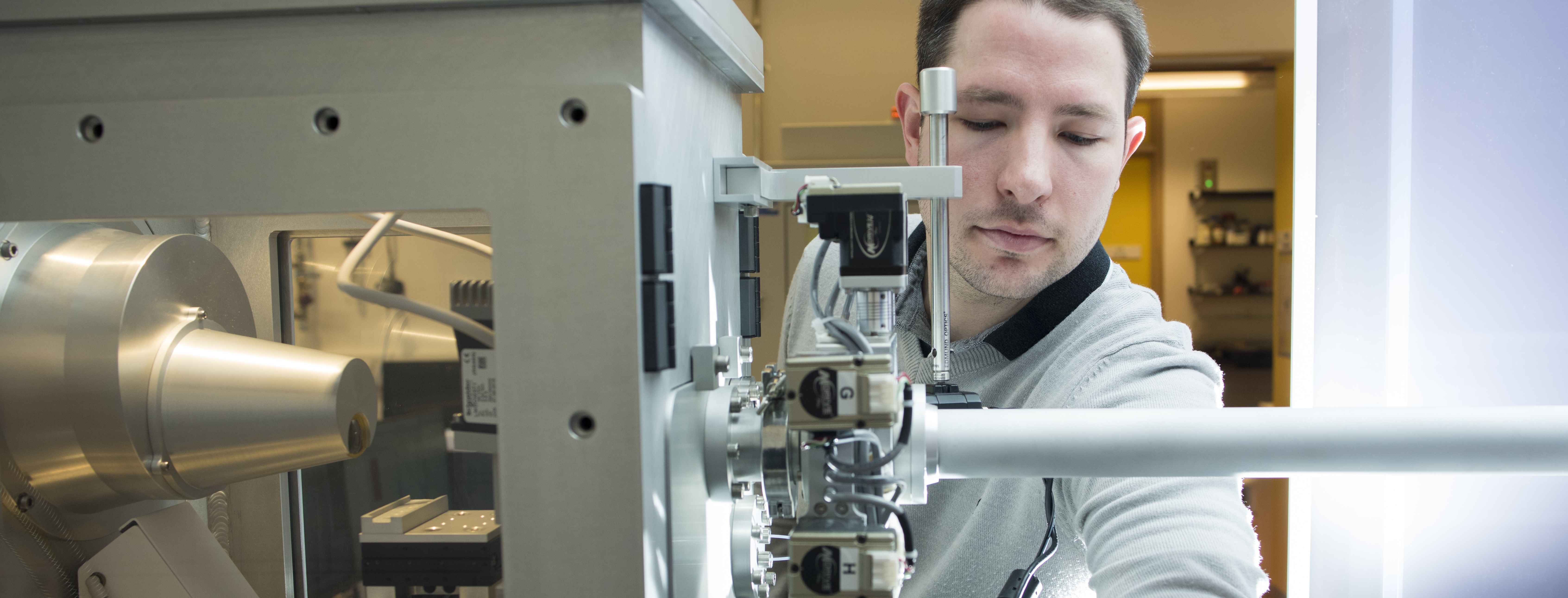Teer Coatings: Developing coatings for spacecraft equipment

The X-ray Diffraction facility at the University of Warwick worked with Teer Coatings Ltd, a specialist manufacturer of surface coatings, on their project to understand the antimicrobial and aging properties of coatings for spacecraft equipment.
They used Small Angle X-ray Scattering (SAXS), a powerful x-ray technique which reveals information about nanoscale particles - including size, distribution and structure - by recording the intensity at which x-rays scatter at different angles as they travel through a material.
What was the challenge?
The temperature and humidity inside a spacecraft create an ideal breeding ground for bacteria and fungi, leading to health hazards and issues with the safe running of equipment. To address this, Teer Coatings aimed to develop wear-resistant antimicrobial films to coat key internal components in spacecrafts.
How was it addressed?
As silver and copper are known for their bactericidal properties, Teer Coatings prepared carbon coatings containing a range of silver and copper concentrations, as well as silver particle clusters. They wanted to understand how the distribution and concentration of metal particles in the carbon matrix affected the antibacterial performance of coatings.
They approached the X-ray Diffraction facility at the University of Warwick to measure the particle-size distribution (the relative amount of particles according to size) of silver and copper nanoparticles in the different coatings using Grazing Incidence SAXS, a variant of SAXS used to study thin surface layers with nanoscale features.
By controlling the angle of the x-ray beam and the depth at which it penetrated the coating samples, it was possible to record a strong scattering pattern that provided information on the size of the particles and clusters as well as the spacings between them. A key advantage of SAXS is that it can record scattering from a large number of particles, providing representative information for the whole coating.
What was the outcome?
Subsequent antibacterial testing showed that the coatings containing silver had high levels of antimicrobial activity. However, coatings with silver clusters were equally effective as those containing high levels of dispersed silver yet had a lower silver concentration overall and crucially lasted longer.
Teer Coatings is now seeking project partners and funding to investigate the lifetime and performance of these antimicrobial coatings onboard a suitable spacecraft in orbit.
Find out more
The X-ray Diffraction Research Technology Platform at Warwick houses a 5m Xenocs Xeuss 2.0 SAXS instrument that enables the non-destructive study of nanoparticles in solids, powders, solutions, gels, oils, thin films or coatings, and biological samples. Temperature and tension testing is also available.
The applications of SAXS are broad and include drug discovery, structural biology, materials development and engineering. Please get in touch to discuss how we may be able to address your challenge.
Contact Claire Gerard (), Warwick Scientific Services Manager, or Dr Steve Huband (), Senior Research Technician specialising in SAXS measurement and analysis.
